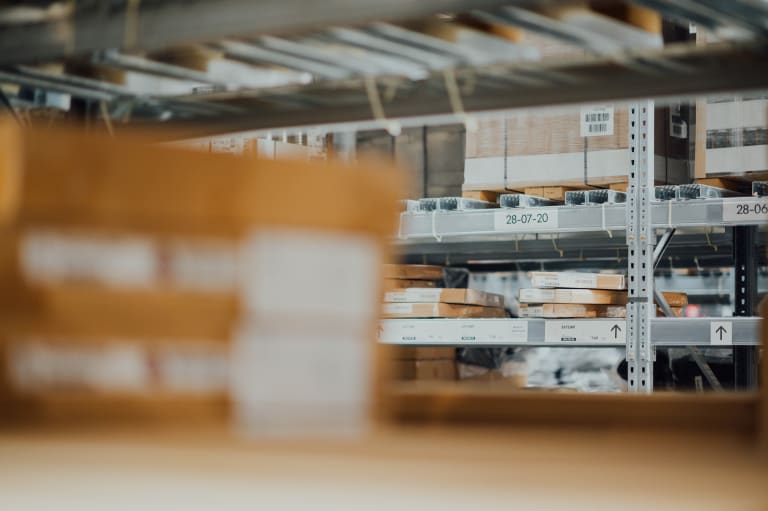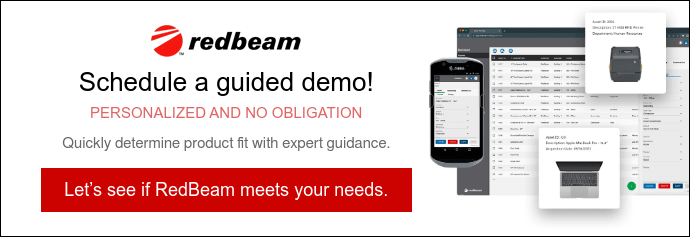
How RFID Asset Tags Evolve the Production Floor
When a company is incorporating new technology at scale, they will typically make a cost-benefit analysis to determine the ROI before purchase. In the instance of tracking and tagging technology, like RFID, the installation process needs to be simple and expandable. The technology must be useful, usable, and reliable to feel like the quality improvement justifies the cost.
Stop Looking
The ability to track assets remotely is a powerful tool for improving the supply chain. It allows companies to know where their assets are at any given time, and also gives them insight into how long an asset has been stationary.
RFID tags can be applied directly to products, or they can be integrated into packaging materials. They operate by sending out an electromagnetic signal that can be read by an RFID reader device. The tag includes information about its location, so if it's attached to a pallet of goods, the reader will know where that pallet is at all times.
Start Tracking
RFID tagging provides a dynamic way for companies to automatically capture information about the assets, people and even processes critical to operational efficiency. RFID tags allow materials, finished products, pallets, shipments and virtually any asset to be identified and located automatically and remotely, without having to manually scan barcodes or have line-of-sight to collect data.
In addition to tracking location, RFID tags also allow businesses to track how long an asset has been stationary — i.e., how long it's been sitting at one location without being moved or used in any way. This information can help companies identify bottlenecks before they happen so that they can take action before things get out of hand (and expensive).
RFID Advantages rundown
Below are some quick-hit, positive attributes unique to the RFID asset tagging platform that you should expect if you incorporate the technology into your own business. Keep in mind that not all businesses need the full-suite of capabilities that the solution provides, but many businesses that scale quickly find benefits in the early adoption stages.
How RFID Tags Function
Radio frequency identification (RFID) is a technology that uses radio waves to identify objects. It's most commonly used in supply chain management and inventory tracking, but it can be used in other applications as well.
RFID is generally used in two ways: passive or active. Passive tags have no power source of their own, so they rely on activating from an external source like a reader or other transmitter. Active tags have their own power source and can transmit information without any outside help. Consider what variation of tag best suits your business needs before you purchase!
The RFID Quick-Hit List
-
RFID tags are easily found:
-
Due to the radio wave signal technology, they don’t require a direct line of sight for data collection. This means that a list of assets can be monitored from anywhere within a set range.
-
RFID tags can be grouped together:
-
Some asset management applications can read multiple tags at the same time. Consider grouping inventory lists when appropriate to get the most accurate data.
-
RFID tags can "hold" a lot more data:
-
Data itself is not directly stored on the RFID chip or tag, so no need to worry about capacity on the receiver end. The list of data tied to the RFID tag can be extensive. So feel free to include maintenance records, warranty information or product specifications if necessary.
-
RFID tags are read/write devices:
-
This type of system allows a trained individual to alter the data tied to the tag with the right hardware. Update the information live as predictable business influences change what data needs collected.
-
RFID tags have more security:
-
The data that RFID tags trace to can be encrypted or even password protected.
-
RFID tags are durable:
-
RFID are more rugged than standard vinyl labels used for barcodes. (Although hard-wearing plastic or metal barcode labels are available for higher prices.)
-
RFID tags can double-up:
-
As a back-up precaution, a company can have barcodes printed onto their surface in case of damage or corruption. Allowing a temporary solution for production teams to use while a replacement is sourced and synced back into the ecosystem.
How Simple Tags Can Break-Up Bottlenecks
The production industry is heavily influenced by their bottlenecks, and more importantly, what technology they will use to overcome them. In order to stay consistent and profitable, many in supply chain management are leaning as heavily into automation and data collection as they can. As a result, the demand for simple, modern visibility has only increased in the manufacturing sector.
RFID can also provide crucial analytics to help plant managers or process engineers confirm proper flow. For example, RFID tags and software also enable the use of time stamps to track all the assets that move through each stage of a process. This means you can easily measure the average time spent at each step and potentially identify bottlenecks or other timing issues.
Are they right for you?
When smart RFID tags are introduced into the production environment, you can make more informed decisions about production, inventory levels and delivery dates. As a result, your labor needs and errors decrease, and your costs do too. Real-time visibility of manufacturing operations has been shown to improve quality control for products as they move down the supply chain, thus enhancing a brand’s competitive advantage and minimizing recall risks.
If you and your business need to learn more about incorporating best practices for tagging assets, or additional information around pricing, please get in touch with our team today.

